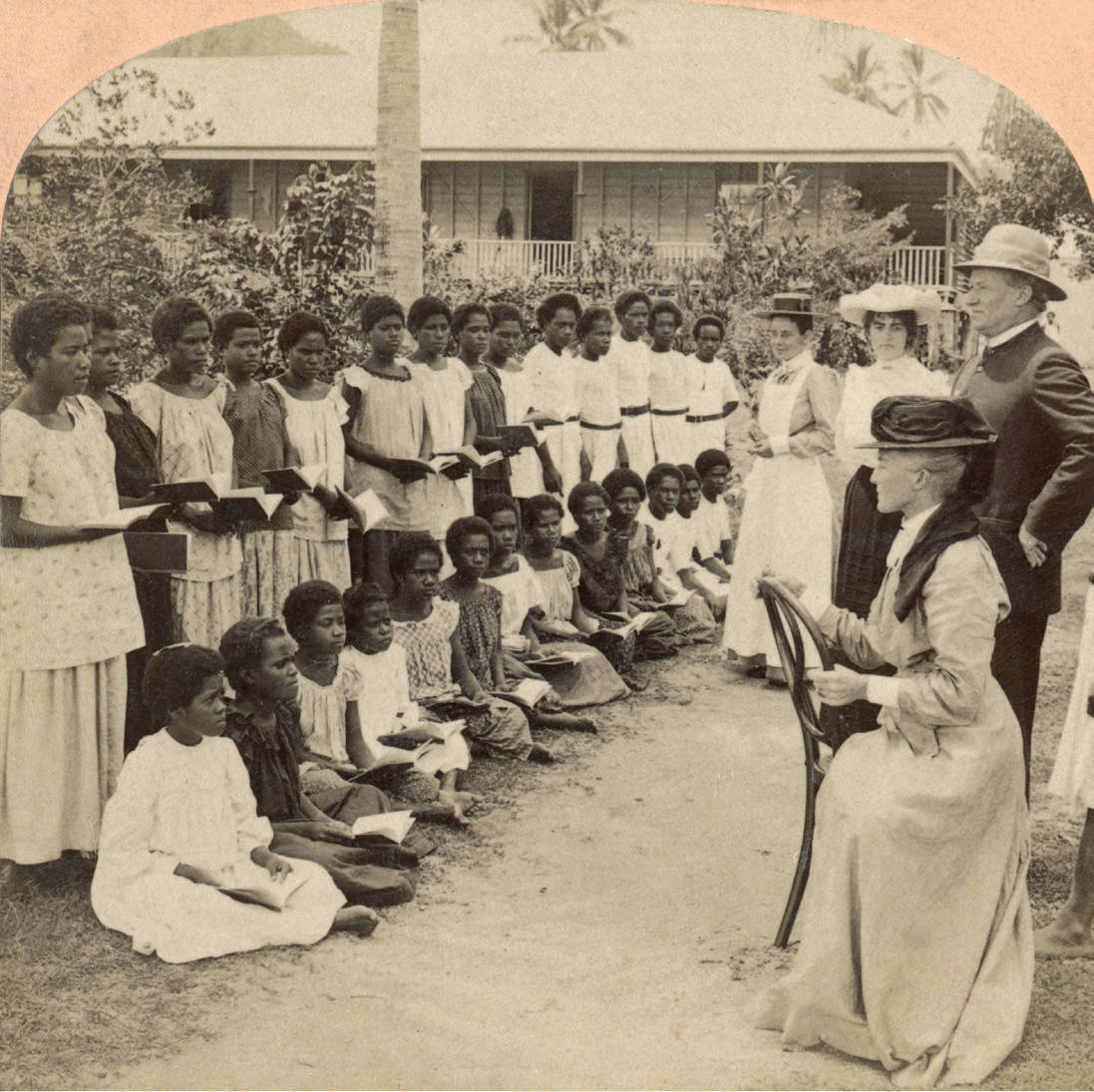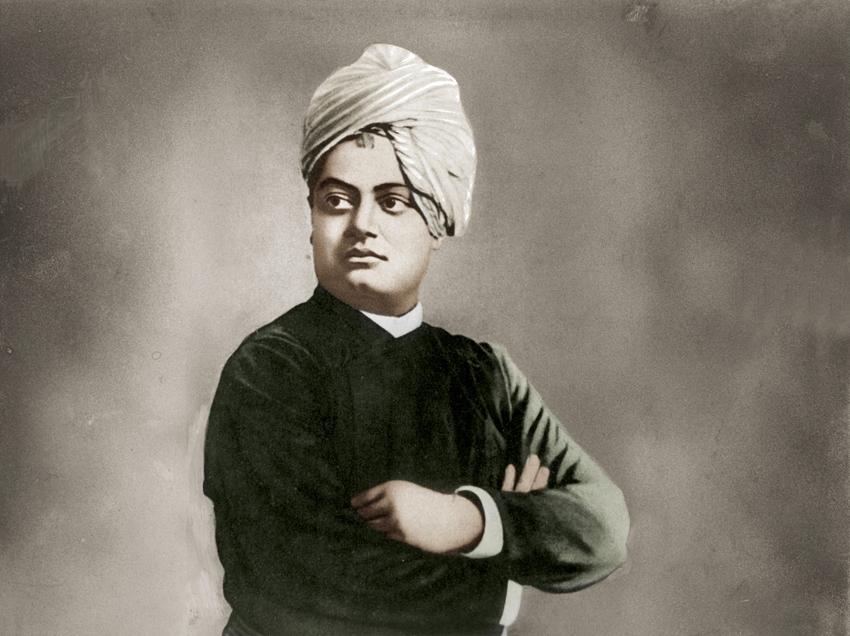Religion
Change
Question
What were the attractions of Christianity within some colonial societies?
[Answer Question]
Religion too provided the basis for new or transformed identities during the colonial era. Most dramatic were those places where widespread conversion to Christianity took place, such as New Zealand, the Pacific islands, and especially non-Muslim Africa. Some 10,000 missionaries had descended on Africa by 1910; by the 1960s, about 50 million Africans, roughly half of the non-Muslim population, claimed a Christian identity. The attractions of the new faith were many. As in the Americas centuries earlier, military defeat shook confidence in the old gods and local practices, fostering openness to new sources of supernatural power that could operate in the wider world now impinging on their societies. Furthermore, Christianity was widely associated with modern education, and, especially in Africa, mission schools were the primary providers of Western education. The young, the poor, and many women—all of them oppressed groups in many African societies—found new opportunities and greater freedom in some association with missions. Moreover, the spread of the Christian message was less the work of European missionaries than of those many thousands of African teachers, catechists, and pastors who brought the new faith to remote villages as well as the local communities that begged for a teacher and supplied the labor and materials to build a small church or school.

But missionary teaching and practice also generated conflict and opposition, particularly when they touched on gender roles. A wide range of issues focusing on the lives of women proved challenging for missionaries and spawned opposition from African converts or potential converts. Female nudity offended Western notions of modesty. Polygyny contradicted Christian monogamy, though such prescriptions sat uneasily beside Old Testament practices, and the question of what male converts should do with their additional wives was always difficult. Bride wealth made marriage seem “a mere mercantile transaction.” Marriages between Christians and non-Christians remained problematic. African sexual activity outside of monogamous marriage often resulted in disciplinary action or expulsion from the church. Missionaries’ efforts to enforce Western gender norms were in part responsible for considerable turnover in the ranks of African church members.
Among the more explosive issues that agitated nascent Christian communities in colonial Kenya was that of “female circumcision,” the excision of a pubescent girl’s clitoris and adjacent genital tissue as a part of initiation rites marking her coming-of-age.31 To the Gikuyu people, among whom it was widely practiced, it was a prerequisite for adult status and marriage. To missionaries, it was physically damaging to girls and brought “unnecessary attention . . . to the non-spiritual aspects of sex.” When missionaries in 1929 sought to enforce a ban on the practice among their African converts, outrage ensued. Thousands abandoned mission schools and churches, but they did not abandon Christianity or modern education. Rather they created a series of independent schools and churches in which they could practice their new faith and pursue their educational goals without missionary intrusion. Some recalled that the New Testament itself had declared that “circumcision is nothing and uncircumcision is nothing.” And so, wrote one angry convert to a local missionary, “Has God spoken to you this time and informed you that those who circumcise will not enter in to God’s place? It is better for a European like you to leave off speaking about such things because you can make the Gospel to be evil spoken of.” (See the Portrait of Wanjiku.)
Change
Question
How and why did Hinduism emerge as a distinct religious tradition during the colonial era in India?
[Answer Question]
As elsewhere, Christianity in Africa soon became Africanized. Within mission-based churches, many converts continued using protective charms and medicines and consulting local medicine men, all of which caused their missionary mentors to speak frequently of “backsliding.” Other converts continued to believe in their old gods and spirits but now deemed them evil and sought their destruction. Furthermore, thousands of separatist movements established a wide array of independent churches, which were thoroughly Christian but under African rather than missionary control and which in many cases incorporated African cultural practices and modes of worship. It was a twentieth-century “African Reformation.”

In India, where Christianity made only very modest inroads, leading intellectuals and reformers began to define their region’s endlessly varied beliefs, practices, sects, rituals, and philosophies as a more distinct, unified, and separate religion now known as Hinduism. It was in part an effort to provide for India a religion wholly equivalent to Christianity, “an accessible tradition and a feeling of historical worth when faced with the humiliation of colonial rule.”32 To Swami Vivekananda (1863–1902), one of nineteenth-century India’s most influential religious figures, a revived Hinduism, shorn of its distortions, offered a means of uplifting the country’s village communities, which were the heart of Indian civilization. Moreover, it could offer spiritual support to a Western world mired in materialism and militarism, a message that he took to the First World Parliament of Religions held in 1893 in Chicago. Here was India speaking back to Europe:
Let the foreigners come and flood the land with their armies, never mind. Up, India and conquer the world with your spirituality. . . . The whole of the Western world is a volcano which may burst tomorrow. . . . Now is the time to work so that India’s spiritual ideas may penetrate deep into the West.33
This new notion of Hinduism provided a cultural foundation for emerging ideas of India as a nation, but it also contributed to a clearer sense of Muslims as a distinct community in India. Before the British takeover, little sense of commonality united the many diverse communities who practiced Islam—urban and rural dwellers; nomads and farmers; artisans, merchants, and state officials. But the British had created separate inheritance laws for all Muslims and others for all Hindus; in their census taking, they counted the numbers of people within these now sharply distinguished groups; and they allotted seats in local councils according to these artificial categories. As some anti-British patriots began to cast India in Hindu terms, the idea of Muslims as a separate community, which was perhaps threatened by the much larger number of Hindus, began to make sense to some who practiced Islam. In the early twentieth century, a young Hindu Bengali schoolboy noticed that “our Muslim school-fellows were beginning to air the fact of their being Muslims rather more consciously than before and with a touch of assertiveness.”34 Here were the beginnings of what became in the twentieth century a profound religious and political division within the South Asian peninsula.